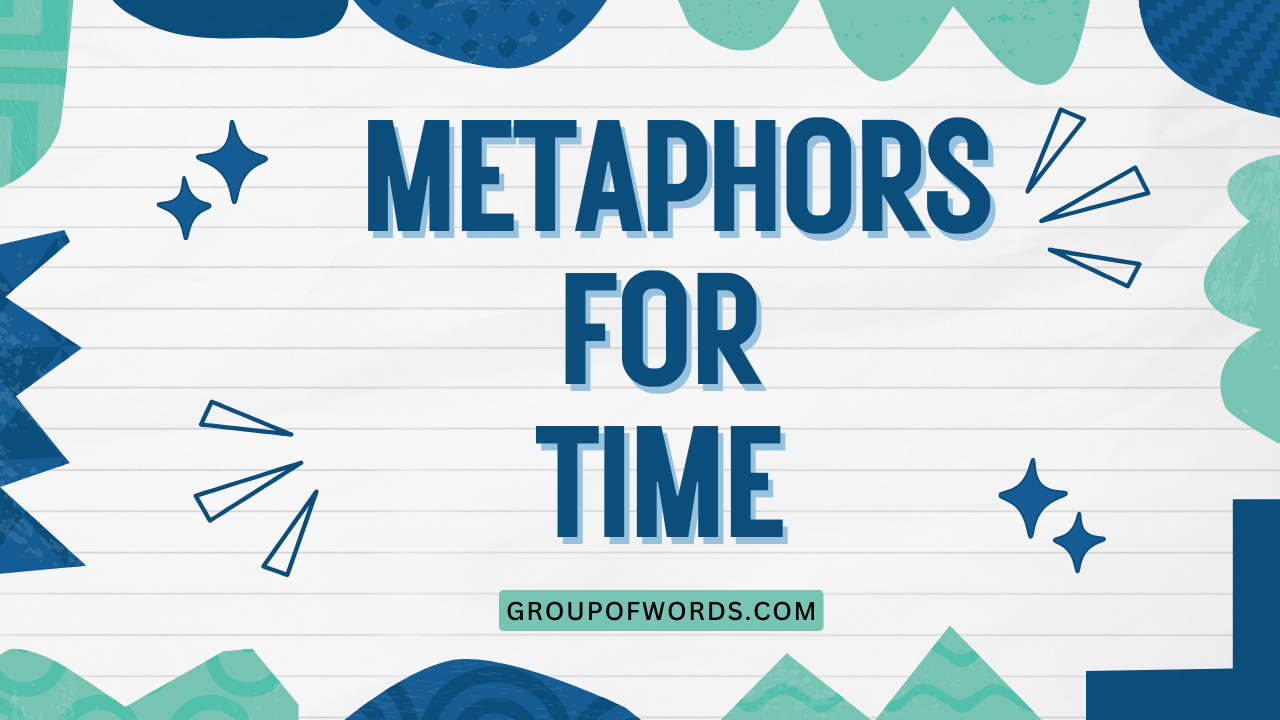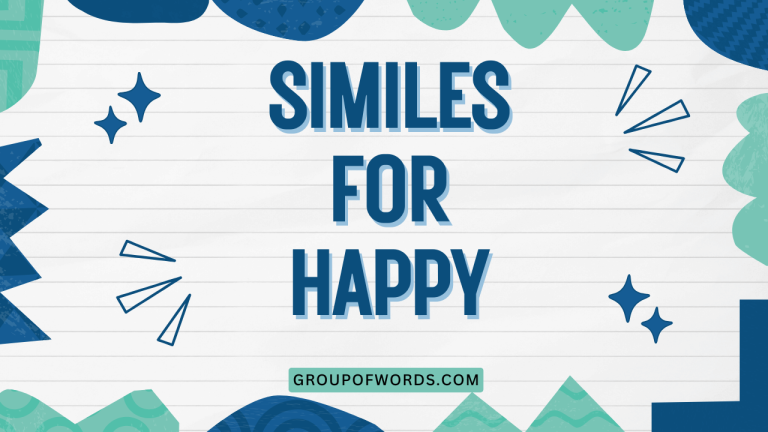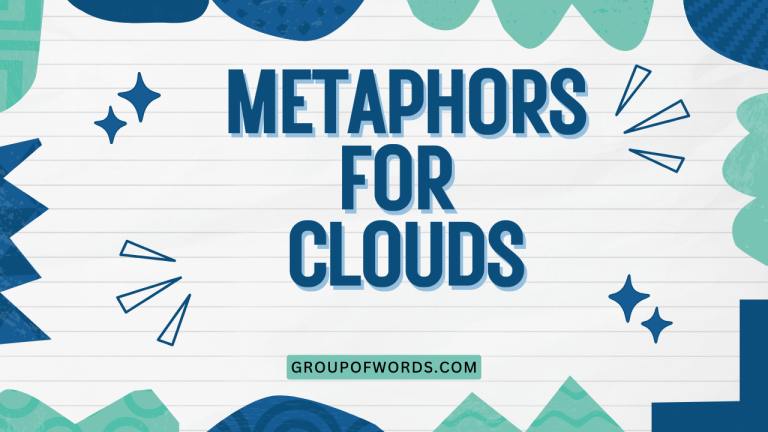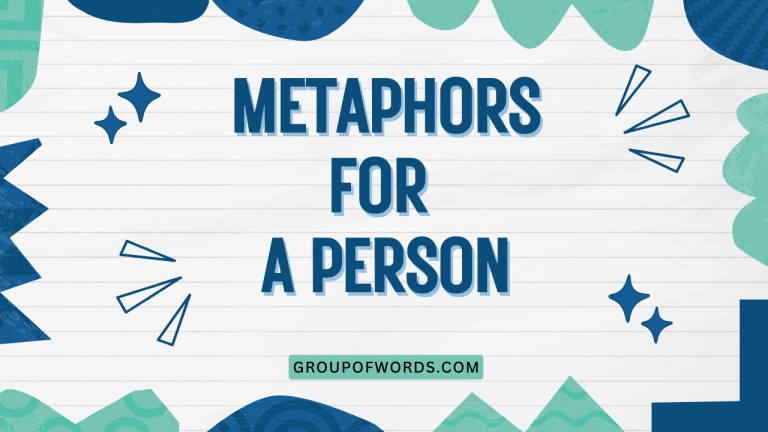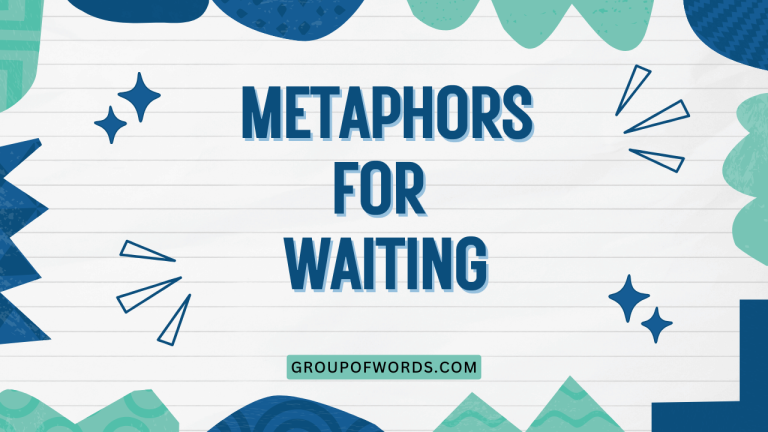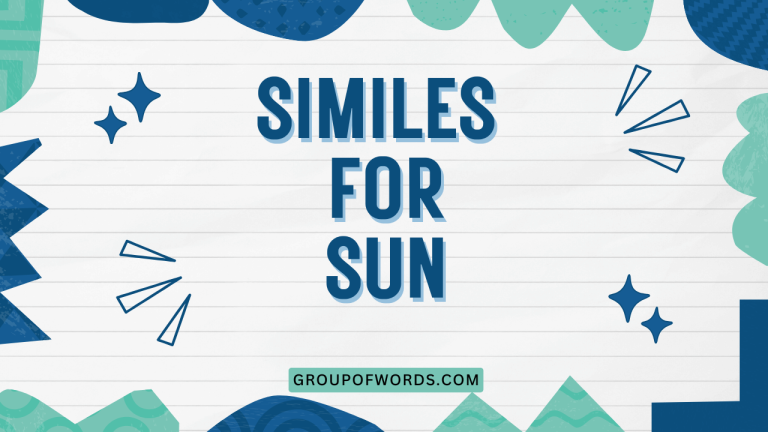Time Flies: Mastering Metaphors for Time in English
Time, an abstract concept, is often difficult to grasp. To make it more relatable and understandable, we frequently use metaphors.
These metaphors help us conceptualize time in terms of more concrete experiences and objects. Understanding how time is metaphorically represented in English is crucial for both native and non-native speakers to improve comprehension and fluency.
This article delves into the various types of metaphors used to describe time, providing examples, usage rules, and practice exercises. Whether you’re an ESL student, a language enthusiast, or simply looking to enhance your understanding of English, this guide will equip you with the knowledge to navigate the fascinating world of time metaphors.
Table of Contents
- Introduction
- Definition of Metaphors for Time
- Structural Breakdown
- Types and Categories of Time Metaphors
- Examples of Time Metaphors
- Usage Rules
- Common Mistakes
- Practice Exercises
- Advanced Topics
- FAQ
- Conclusion
Definition of Metaphors for Time
A metaphor is a figure of speech in which a word or phrase is applied to an object or action to which it is not literally applicable. Metaphors for time involve describing time using language typically associated with something else, such as money, movement, or physical space.
This allows us to conceptualize the abstract notion of time in more tangible terms. By understanding these metaphors, we gain a deeper understanding of how we perceive and discuss time in the English language.
The function of time metaphors is primarily to make the abstract concept of time more understandable and relatable. Time itself is intangible; we cannot see, touch, or directly interact with it.
By using metaphors, we can give time qualities that are more familiar to us, such as speed, value, or direction. These metaphors allow us to reason about time, plan for the future, and reflect on the past in a more concrete way.
Time metaphors are used in a variety of contexts, from everyday conversation to literature and scientific discourse. In casual conversation, we might say “I’m running out of time,” while in literature, a writer might describe time as a “relentless thief.” Even in scientific contexts, such as physics, time is often discussed in metaphorical terms, such as the “arrow of time.” The versatility of time metaphors allows them to be adapted to suit a wide range of communicative purposes.
Structural Breakdown
The structure of a time metaphor typically involves two elements: the target domain (time) and the source domain (the concept used to describe time). The source domain provides a more concrete framework for understanding the target domain. For example, in the metaphor “Time is money,” time is the target domain, and money is the source domain. The metaphor suggests that time, like money, is a valuable resource that can be spent, saved, or wasted.
Metaphorical language often relies on implicit comparisons. The connection between time and the source domain is not always explicitly stated but is implied through the use of specific words and phrases. Consider the sentence, “Don’t waste time.” The verb “waste” is typically associated with tangible resources, such as food or water. By using “waste” in conjunction with “time,” we create a metaphorical link between time and a valuable resource that can be depleted.
The grammar of time metaphors usually follows standard English sentence structure. However, the choice of verbs, nouns, and adjectives is crucial in conveying the metaphorical meaning. Verbs like “spend,” “save,” “lose,” and “gain” are commonly used to describe time as a resource. Adjectives like “long,” “short,” “fast,” and “slow” are used to describe the duration or pace of time. Nouns like “deadline,” “schedule,” and “era” help to structure and categorize time.
Types and Categories of Time Metaphors
Time metaphors can be categorized based on the source domain they draw upon. Here are some common categories:
Time as a Resource
This is one of the most common metaphors for time. It treats time as a valuable commodity that can be used, saved, wasted, or invested.
Words like “spend,” “save,” “waste,” “invest,” and “budget” are frequently used in this context.
Time as a Moving Object
This metaphor depicts time as something that moves, either towards us or away from us. Words like “approaching,” “passing,” “flying,” “creeping,” and “running out” are typical of this category.
Time can be seen as a river flowing, a train speeding, or an arrow flying.
Time as a Container
This metaphor frames time as a space that can be filled, occupied, or divided. Words like “in,” “during,” “throughout,” “within,” and “take up” are common.
We might say “in the past,” “during the summer,” or “take up too much time.”
Time as a Person
This metaphor gives time human-like qualities, such as being a friend, an enemy, or a judge. Words like “waiting,” “allowing,” “forgiving,” and “demanding” can be used to personify time.
For example, “Time heals all wounds” or “Time will tell.”
Time as a Landscape
This metaphor views time as a landscape that can be traversed, explored, or mapped. Words like “ahead,” “behind,” “journey,” “path,” and “horizon” are characteristic of this category.
We might speak of “looking ahead to the future” or “being behind schedule.”
Examples of Time Metaphors
Below are examples of time metaphors, categorized by type. Each table contains a variety of sentences demonstrating how these metaphors are used in different contexts.
Table 1: Time as a Resource
This table illustrates how time is often treated as a valuable commodity that can be managed, similar to money or other resources. The examples showcase various verbs and phrases that emphasize this concept.
| Example Sentence | Explanation |
|---|---|
| I need to budget my time more effectively. | Treating time as a resource that needs to be allocated carefully. |
| Don’t waste your time on trivial matters. | Time is presented as something precious that should not be squandered. |
| I’m investing my time in learning a new skill. | Time is seen as an investment that will yield future benefits. |
| He spends too much time on social media. | Time is viewed as a resource that can be used up. |
| She saved time by taking a shortcut. | Time is portrayed as something that can be accumulated or preserved. |
| Time is money. | A common idiom equating time with financial value. |
| I’m running out of time to finish this project. | Time is depicted as a limited resource that is being depleted. |
| We need to manage our time wisely. | Time is seen as a resource that requires careful management. |
| He used up all his time on the first question. | Time is presented as a finite resource that can be exhausted. |
| She allocated time for each task. | Time is treated as a resource that can be divided and assigned. |
| I lost time due to the traffic jam. | Time is viewed as a resource that can be lost or wasted. |
| Let’s buy some time by delaying the decision. | Treating time as something that can be acquired. |
| I can’t afford to waste any more time. | Time is seen as a valuable resource that one cannot squander. |
| He’s paying the price for wasting time in his youth. | Time is an investment with returns or consequences. |
| We need to maximize our time. | Treating time as a resource to be optimized. |
| She’s wasting valuable time. | Time is presented as a precious resource. |
| I invested a lot of time in this project. | Time is seen as an investment with potential returns. |
| We need to conserve our time. | Treating time like a natural resource. |
| He is spending his time wisely. | Time is viewed as a resource to be used judiciously. |
| Time is a precious commodity. | Time is equated to a valuable resource. |
| We’re short on time. | Time is seen as a limited resource. |
| I’ve got no time to spare. | Time is a resource that is scarce. |
| She’s economizing on time. | Treating time as something to be used efficiently. |
Table 2: Time as a Moving Object
This table presents examples of time being depicted as something in motion, either approaching, passing, or receding. The examples illustrate how this metaphor captures the dynamic and transient nature of time.
| Example Sentence | Explanation |
|---|---|
| Time flies when you’re having fun. | Time is presented as moving quickly. |
| The deadline is approaching rapidly. | Time is depicted as moving closer. |
| The years passed quickly. | Time is seen as something that goes by. |
| Time marches on. | Time is personified as moving forward relentlessly. |
| The day went by in a blur. | Time is depicted as passing quickly and indistinctly. |
| Time creeps when you’re bored. | Time is presented as moving slowly. |
| The future is coming. | Time is seen as approaching. |
| The moment has passed. | Time is depicted as moving away. |
| Time is running out. | Time is presented as a resource that is being depleted as it moves forward. |
| The clock is ticking. | Time is depicted as moving forward incrementally. |
| Time slips away. | Time is shown as something that is hard to hold onto. |
| The deadline is drawing near. | Time is approaching. |
| The new year is fast approaching. | Time is moving closer quickly. |
| The opportunity has sailed by. | Time has passed and the chance is gone. |
| Time rolls on. | Time continues to move forward. |
| The days are drifting by. | Time is passing slowly and aimlessly. |
| The train of time is moving. | Time is in motion. |
| The past is receding into the distance. | Time is moving away from us. |
| The hour flew by. | Time passed very quickly. |
| Time is like a river flowing. | Time is a continuous, moving entity. |
| The minutes dragged on. | Time passed very slowly. |
| The weeks rolled by. | Time passed steadily. |
| The years have swept by. | Time has passed quickly and powerfully. |
Table 3: Time as a Container
This table illustrates how time is often conceptualized as a container that can hold events, experiences, or activities. The examples show how prepositions and phrases are used to describe time as a bounded space.
| Example Sentence | Explanation |
|---|---|
| In the past, things were different. | Time is presented as a bounded space. |
| During the summer, we went to the beach. | Time is depicted as a period within which events occur. |
| Throughout the day, I was busy with meetings. | Time is seen as a continuous space. |
| Within a year, we hope to achieve our goals. | Time is presented as a limited space. |
| The event took up too much time. | Time is depicted as a space that can be occupied. |
| Over the years, things have changed. | Time is seen as a span within which changes occur. |
| In the future, we will have flying cars. | Time is presented as a space yet to be entered. |
| Within the decade, we expect significant progress. | Time is depicted as a specific period. |
| In an instant, everything changed. | Time is presented as a very small space. |
| During the concert, it started to rain. | Time is seen as a period in which events happen. |
| Throughout the night, the storm raged. | Time is depicted as a continuous period during which an event occurs. |
| In the 19th century, many inventions were made. | Time is used to specify a historical period |
| Over the course of the project, we faced many challenges. | Time as a period during which events unfold. |
| Within the timeframe, we completed the task. | Time is a boundary for completing a task. |
| The memories are etched in time. | Time as something that holds memories. |
| We’ll meet again in due time. | Time as a future space. |
| The answer lies within the annals of time. | Time as a repository of knowledge. |
| During the meeting, we discussed the budget. | Time as an event space. |
| Throughout history, there have been great leaders. | Time as a historical container. |
| We live in an age of technology. | Time as a current era. |
| The era is filled with innovation. | Time is a container with contents. |
| In the blink of an eye, everything changed. | Time is a very short space. |
| Over the centuries, traditions have evolved. | Time is a long span. |
Table 4: Time as a Person
This table provides examples of time being personified with human-like qualities, such as having the ability to heal, tell stories, or wait. These examples illustrate how time can be given agency and intention.
| Example Sentence | Explanation |
|---|---|
| Time heals all wounds. | Time is given the ability to heal emotional pain. |
| Time will tell if this was the right decision. | Time is personified as revealing the truth. |
| Time waits for no one. | Time is depicted as being impartial and relentless. |
| Time is a great teacher. | Time is personified as providing lessons through experience. |
| Time forgives all mistakes. | Time is given the ability to pardon errors. |
| Time is the ultimate judge. | Time is personified as evaluating actions and decisions. |
| Time allows us to reflect on our past. | Time is given the ability to enable reflection. |
| Time is a silent witness. | Time is personified as observing events without interference. |
| Time demands patience. | Time is depicted as requiring a certain virtue. |
| Time is a cruel master. | Time is personified as being harsh and unforgiving. |
| Time reveals all truths. | Time is given the ability to uncover hidden facts. |
| Time is a great storyteller. | Time is personified as narrating events. |
| Time is the ultimate healer. | Time as a remedy for emotional distress. |
| Time tests all things. | Time as a trial agent. |
| Time is a patient friend. | Time is a supportive companion. |
| Time remembers everything. | Time has a perfect memory. |
| Time mocks our ambitions. | Time is scornful of our goals. |
| Time is an impartial observer. | Time is a neutral witness. |
| Time challenges our limits. | Time pushes us to our boundaries. |
| Time is a subtle thief. | Time steals our youth. |
| Time dictates our fate. | Time controls our destiny. |
| Time decides our future. | Time determines what is to come. |
| Time judges our actions. | Time evaluates our behavior. |
Table 5: Time as a Landscape
This table provides examples of time being represented as a landscape, with concepts like journeys, paths, and horizons. The examples illustrate how this metaphor helps us visualize time as a space to be traversed.
| Example Sentence | Explanation |
|---|---|
| We’re looking ahead to the future. | Time is seen as a landscape that stretches before us. |
| We’re behind schedule on this project. | Time is depicted as a path, and we are falling behind. |
| The journey through time has been long. | Time is presented as a long and arduous trip. |
| The path to success is paved with hard work and time. | Time is seen as a route to achieving goals. |
| The horizon of possibilities stretches before us. | Time is depicted as a distant boundary of potential. |
| We’ve come a long way in a short time. | Time is presented as a distance we have traveled. |
| We’re navigating the challenges of our time. | Time is seen as a landscape that requires careful navigation. |
| We’re exploring new frontiers in technology. | Time is depicted as a space to be explored. |
| We’re mapping out our future plans. | Time is presented as a landscape that can be planned and charted. |
| We’re charting a new course for the future. | Time is seen as a sea to be navigated. |
| We’re crossing the bridge to the future. | Time is a barrier to be overcome. |
| We’re on the road to a better future. | Time as a journey. |
| We’re at a crossroads in our lives. | Time as a critical juncture. |
| We’re climbing the ladder of time. | Time as a challenging ascent. |
| We’re descending into the past. | Time as a downward journey. |
| The future is a vast, uncharted territory. | Time as an unexplored expanse. |
| We’re pioneering a new era. | Time as new land. |
| We’re building a foundation for the future. | Time as a construction site. |
| We’re sculpting our future. | Time as a medium for creation. |
| The landscape of time is ever-changing. | Time is a dynamic environment. |
| We’re traveling through history. | Time is a historical journey. |
| We’re embarking on a new chapter. | Time is a new beginning. |
| We’re setting sail into the unknown future. | Time is an uncharted sea. |
Usage Rules
While metaphors are inherently imaginative, there are some guidelines to follow to ensure clarity and effective communication. Firstly, consistency is key. If you start using one type of metaphor, try to maintain that metaphor throughout the relevant context. Mixing metaphors can lead to confusion and weaken your message. For example, avoid saying “Time is money, so let’s sail ahead.” This combines the “time as money” and “time as a moving object” metaphors in a way that doesn’t quite work.
Secondly, be aware of your audience. Some metaphors are more universally understood than others. If you’re communicating with people from different cultural backgrounds, choose metaphors that are likely to be familiar to them. Avoid overly complex or culturally specific metaphors that might be misinterpreted.
Thirdly, ensure the metaphor is appropriate for the context. A lighthearted metaphor might be suitable for a casual conversation, but it would be inappropriate for a formal presentation or a serious discussion. Consider the tone and purpose of your communication when selecting a metaphor.
Finally, do not use clichéd metaphors excessively. While they are easily understood, overusing them can make your writing or speech sound unoriginal and uninspired. Try to find fresh and creative ways to express your ideas.
Common Mistakes
One common mistake is mixing metaphors inappropriately, as mentioned earlier. This can create confusing and nonsensical images. Here’s an example:
Incorrect: “Time is a river that we must grab by the horns.”
Correct: “Time is a river that flows relentlessly.”
Another frequent error is using a clichéd metaphor when a more precise or original expression would be more effective. For example:
Clichéd: “Time flies.”
Better: “The years passed in a blur of activity.”
A third mistake is using a metaphor that is inconsistent with the overall tone of the communication. For instance:
Inappropriate: “We’re hemorrhaging time on this project; let’s get our ducks in a row.” (Mixing a serious situation with a casual idiom)
Better: “We’re losing valuable time on this project; we need to streamline our efforts.”
Finally, be careful not to overuse metaphors. While they can be effective, too many metaphors can make your writing or speech sound convoluted and artificial. Use them sparingly and purposefully.
Practice Exercises
Test your knowledge of time metaphors with these exercises.
Exercise 1: Identify the Type of Time Metaphor
Identify the type of time metaphor used in each sentence (Resource, Moving Object, Container, Person, Landscape).
| Question | Answer |
|---|---|
| 1. Time heals all wounds. | Person |
| 2. We are running out of time. | Resource |
| 3. In the past, things were different. | Container |
| 4. Time flies when you’re having fun. | Moving Object |
| 5. We’re looking ahead to the future. | Landscape |
| 6. Don’t waste your time on trivial matters. | Resource |
| 7. The deadline is approaching rapidly. | Moving Object |
| 8. During the summer, we went to the beach. | Container |
| 9. Time waits for no one. | Person |
| 10. We’re behind schedule on this project. | Landscape |
Exercise 2: Complete the Sentence with an Appropriate Metaphor
Complete each sentence with an appropriate time metaphor.
| Question | Answer |
|---|---|
| 1. We need to ________ our time wisely. | budget/manage |
| 2. The years ________ quickly. | passed/flew |
| 3. ________ the day, I was busy. | Throughout |
| 4. Time is a great ________. | teacher/healer |
| 5. We’re ________ to the future. | looking ahead |
| 6. I can’t ________ to waste any more time. | afford |
| 7. The train of time is always ________. | moving |
| 8. The memories are ________ in time. | etched |
| 9. Time is a subtle ________. | thief |
| 10. We are ________ a new era. | pioneering |
Exercise 3: Rewrite the Sentence Using a Time Metaphor
Rewrite each sentence using a time metaphor.
| Question | Answer |
|---|---|
| 1. The deadline is very close. | The deadline is breathing down our necks. |
| 2. We need to use our time more efficiently. | We need to budget our time more effectively. |
| 3. The opportunity has passed. | The opportunity has sailed by. |
| 4. I learned a lot over the years. | Time has been a great teacher. |
| 5. We are planning for the future. | We are mapping out our future plans. |
| 6. We must take advantage of every moment. | We must seize every moment. |
| 7. The project is behind schedule. | We are behind schedule on the project. |
| 8. We are making progress. | We are on the road to success. |
| 9. The years have gone by quickly. | The years have swept by. |
| 10. We must face the challenges of our time. | We must navigate the challenges of our time. |
Advanced Topics
For advanced learners, exploring the cultural variations in time metaphors can be fascinating. Different cultures conceptualize time in different ways, and this is reflected in their language.
For example, some cultures view time as cyclical rather than linear, which influences the metaphors they use.
Another advanced topic is the use of time metaphors in literature and poetry. Writers often use metaphors to create vivid imagery and convey deeper meanings about the nature of time, mortality, and memory.
Analyzing these literary uses can enhance your understanding of both the language and the themes explored in the text.
Furthermore, you can delve into the philosophical implications of time metaphors. Our metaphors for time shape our perception of reality and influence how we think about the past, present, and future.
Reflecting on these implications can lead to a deeper understanding of ourselves and the world around us.
FAQ
Q1: Why do we use metaphors for time?
We use metaphors for time because time is an abstract concept that is difficult to grasp directly. Metaphors help us understand time by relating it to more concrete and familiar experiences, such as money, movement, or physical space.
This makes time more relatable and easier to reason about.
Q2: What are the most common types of time metaphors?
The most common types of time metaphors include time as a resource (e.g., “Time is money”), time as a moving object (e.g., “Time flies”), time as a container (e.g., “In the past”), time as a person (e.g., “Time heals all wounds”), and time as a landscape (e.g., “Looking ahead to the future”).
Q3: How can I improve my understanding of time metaphors?
To improve your understanding of time metaphors, pay attention to how time is discussed in everyday conversations, literature, and media. Identify the metaphors being used and analyze how they shape the meaning of the text.
Practice using different types of time metaphors in your own writing and speech.
Q4: Are time metaphors universal across all languages?
No, time metaphors are not universal. Different languages and cultures conceptualize time in different ways, which is reflected in the metaphors they use.
Some cultures may emphasize the cyclical nature of time, while others focus on its linear progression. These cultural differences influence the types of metaphors that are used to describe time.
Q5: What should I avoid when using time metaphors?
Avoid mixing metaphors inappropriately, using clichéd metaphors excessively, and using metaphors that are inconsistent with the overall tone of your communication. Be mindful of your audience and choose metaphors that are likely to be understood and appreciated.
Q6: How do time metaphors affect our perception of time?
Time metaphors can significantly influence our perception of time. For example, if we view time as a resource, we may feel pressured to use it efficiently
and avoid wasting it.
If we see time as a moving object, we may feel a sense of urgency or a need to keep up with its pace. These metaphors can shape our attitudes and behaviors related to time management, planning, and prioritizing.
Conclusion
Metaphors for time are an integral part of the English language, providing us with a means to conceptualize and communicate about an abstract concept. By understanding the different types of time metaphors, their structures, and usage rules, you can enhance your comprehension, fluency, and overall communication skills.
Whether you’re a student, a professional, or simply a language enthusiast, mastering time metaphors will enrich your understanding of English and the way we perceive the world around us. So, continue to explore, practice, and reflect on the fascinating world of time metaphors!
